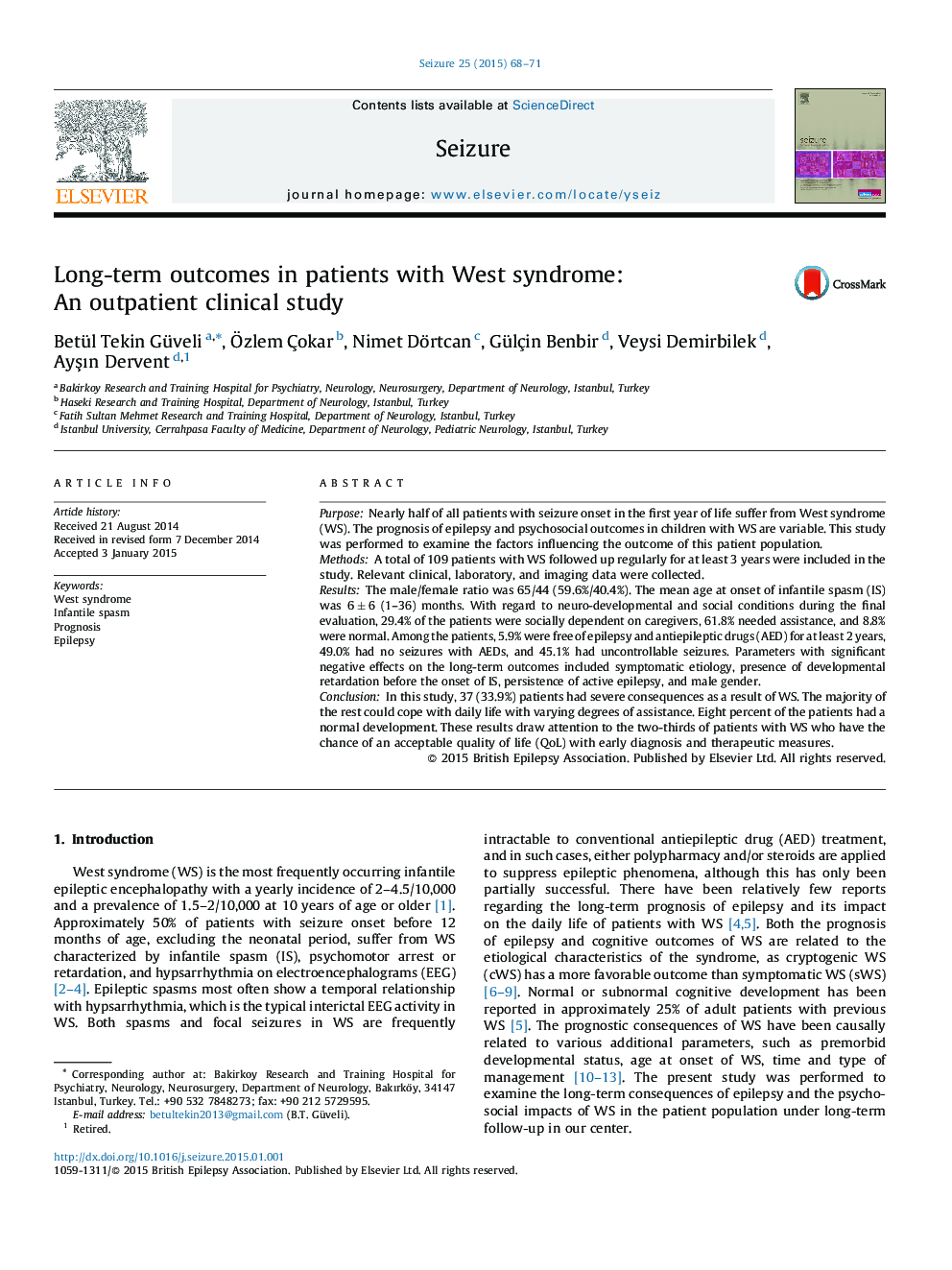| Article ID | Journal | Published Year | Pages | File Type |
|---|---|---|---|---|
| 340527 | Seizure | 2015 | 4 Pages |
•We examine the long-term consequences of West syndrome (WS) on 109 patients with a mean follow-up duration of 8 years.•Poor prognostic factors are etiology, early seizures and developmental involvement.•The full-blown picture of WS stabilizes by age 5. Approximately 1/3 of the patients are severely debilitated in the long-run.•Two-thirds of patients can cope with the daily life; 8% is normal.
PurposeNearly half of all patients with seizure onset in the first year of life suffer from West syndrome (WS). The prognosis of epilepsy and psychosocial outcomes in children with WS are variable. This study was performed to examine the factors influencing the outcome of this patient population.MethodsA total of 109 patients with WS followed up regularly for at least 3 years were included in the study. Relevant clinical, laboratory, and imaging data were collected.ResultsThe male/female ratio was 65/44 (59.6%/40.4%). The mean age at onset of infantile spasm (IS) was 6 ± 6 (1–36) months. With regard to neuro-developmental and social conditions during the final evaluation, 29.4% of the patients were socially dependent on caregivers, 61.8% needed assistance, and 8.8% were normal. Among the patients, 5.9% were free of epilepsy and antiepileptic drugs (AED) for at least 2 years, 49.0% had no seizures with AEDs, and 45.1% had uncontrollable seizures. Parameters with significant negative effects on the long-term outcomes included symptomatic etiology, presence of developmental retardation before the onset of IS, persistence of active epilepsy, and male gender.ConclusionIn this study, 37 (33.9%) patients had severe consequences as a result of WS. The majority of the rest could cope with daily life with varying degrees of assistance. Eight percent of the patients had a normal development. These results draw attention to the two-thirds of patients with WS who have the chance of an acceptable quality of life (QoL) with early diagnosis and therapeutic measures.
